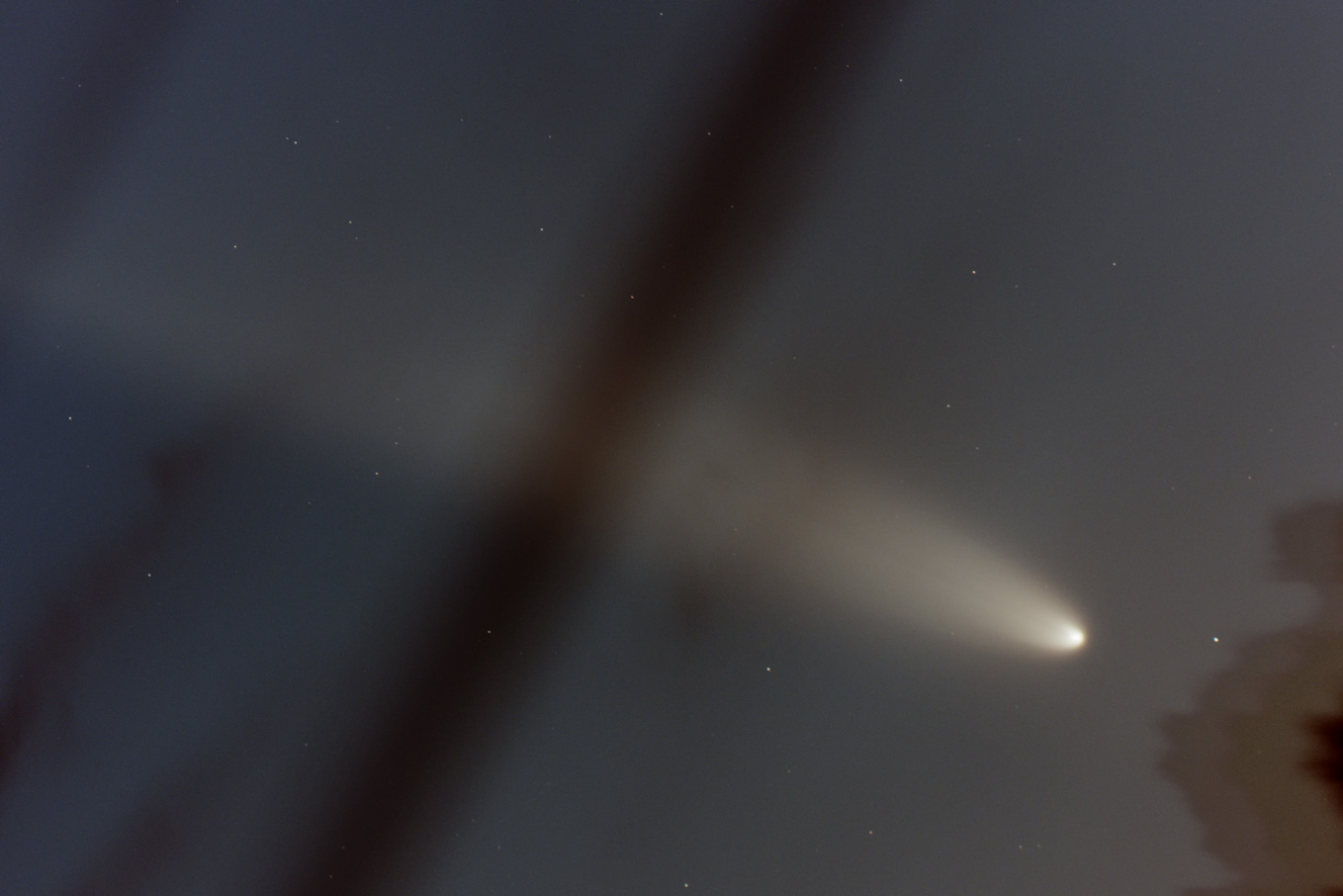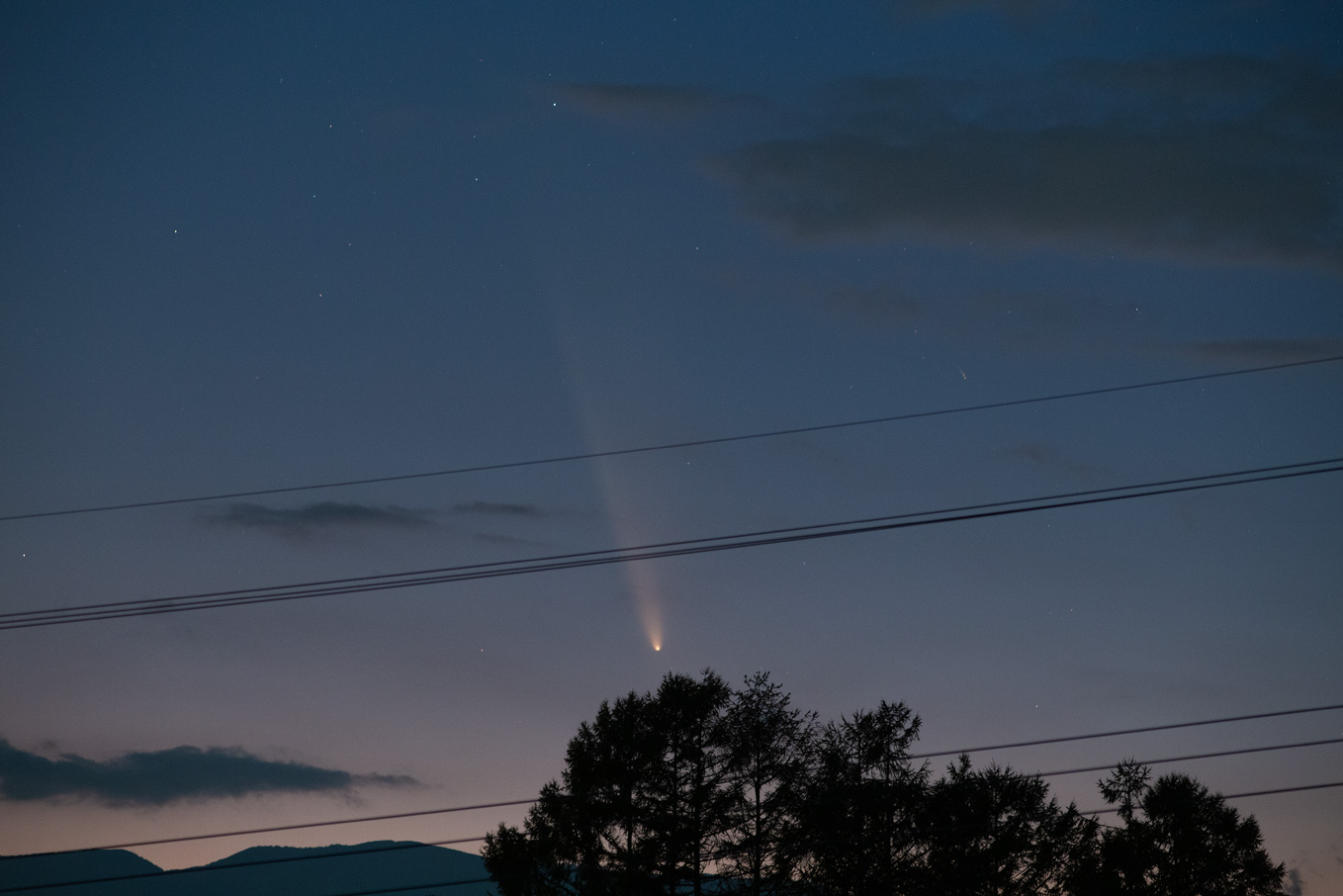
 |
| Date & Time: | Oct 13 2024, from 18:12 to 18:13 JST(+0900) |
| Composed 3 shots with 30 seconds exposed | |
| Optical: | TAKAHASHI 16cm(6.3") epsilon (f=530mm, F3.3) |
| with LPS-D1 Light-pollution suppression filter | |
| Auto-guided with TAKAHASHI JP Equatorial | |
| CMOS Camera: | ZWO ASI2600MC Pro (Cooled temp.: -10°C) |
| Location: | Ooizumi, Hokuto city, Yamanashi pref. |
| Camera Settings: | Recording format...16bit FITS, converted to 16bit TIFF(6248×4176) |
| Device Size...23.5×15.7mm, Gain...100 |
 |
| Date & Time: | Oct 13 2024, 18:12 JST(+0900), 2.5sec exposed |
| Optical: | AF zoom-Nikkor 80-200mmF2.8ED (f=135mm, stop: F4.0) |
| Fixed on tripod | |
| Digital Camera: | Canon EOS 6D (Remodeled) |
| Location: | Ooizumi, Hokuto city, Yamanashi pref. |
| Camera Settings: | Recording format...14bit CCD-RAW, converted to 16bit TIFF(5472×3648) |
| Device Size...36×24mm, Sensitivity...ISO1600 |
 2023A3 Tsuchinshan-ATLAS on Oct 15, 2024 |
 2023A3 Tsuchinshan-ATLAS on Jun 29, 2024 |
 |
 |
Copyright(c) 2024 by Naoyuki Kurita, All rights reserved. |
| To top page | To Comets&Meteors index |